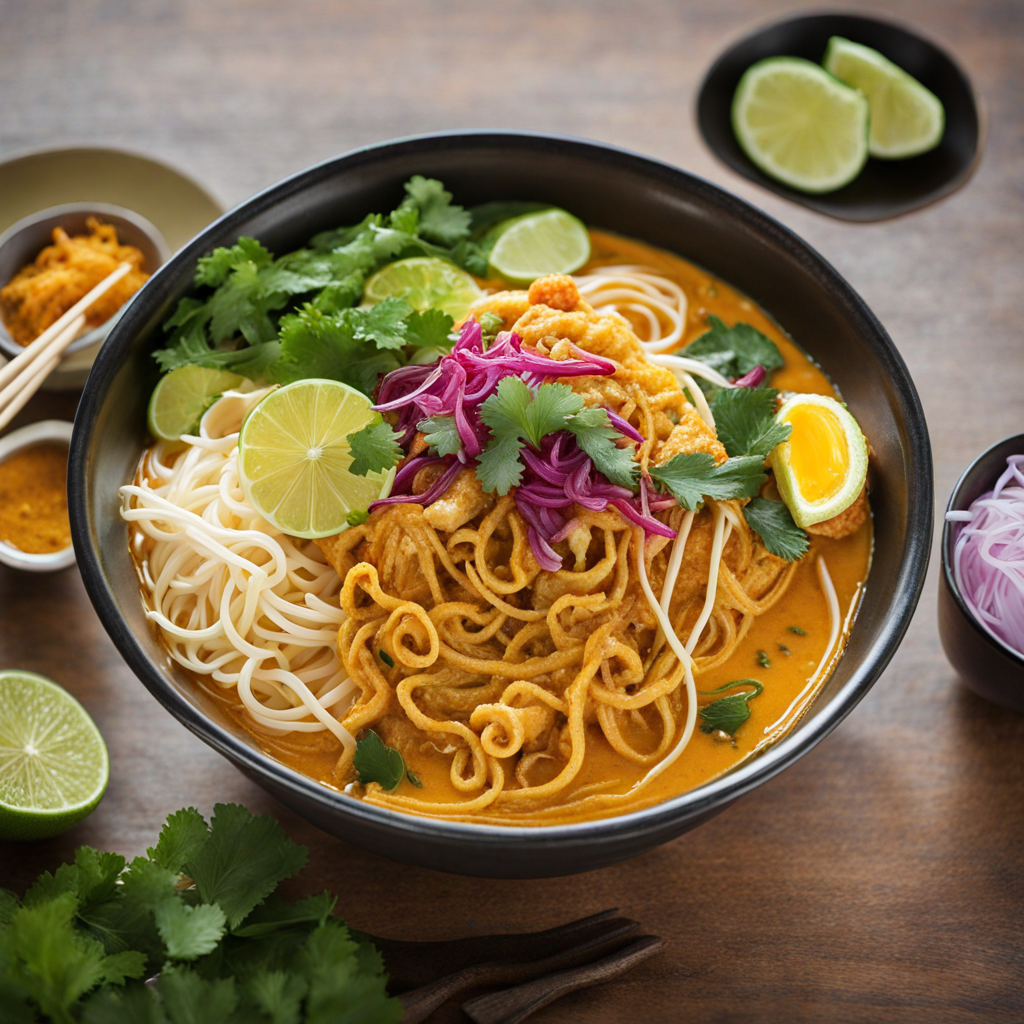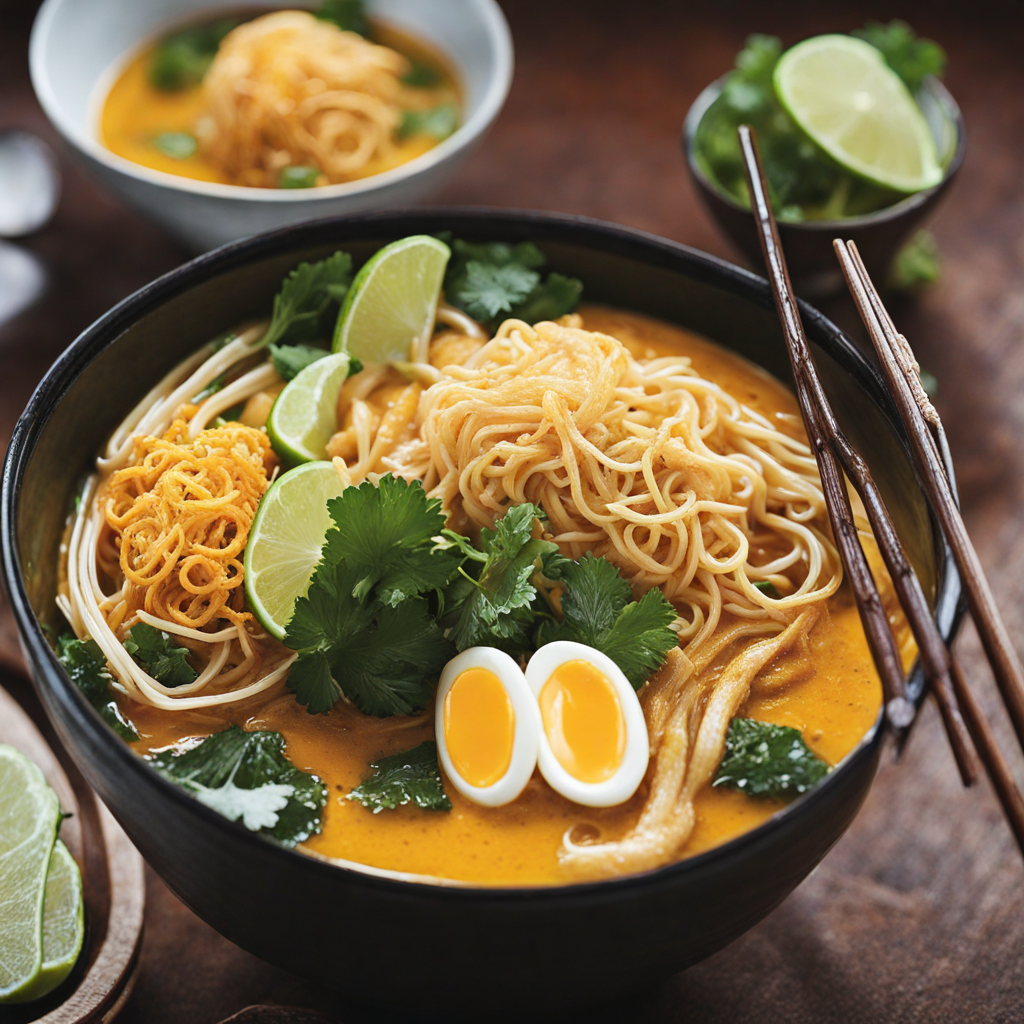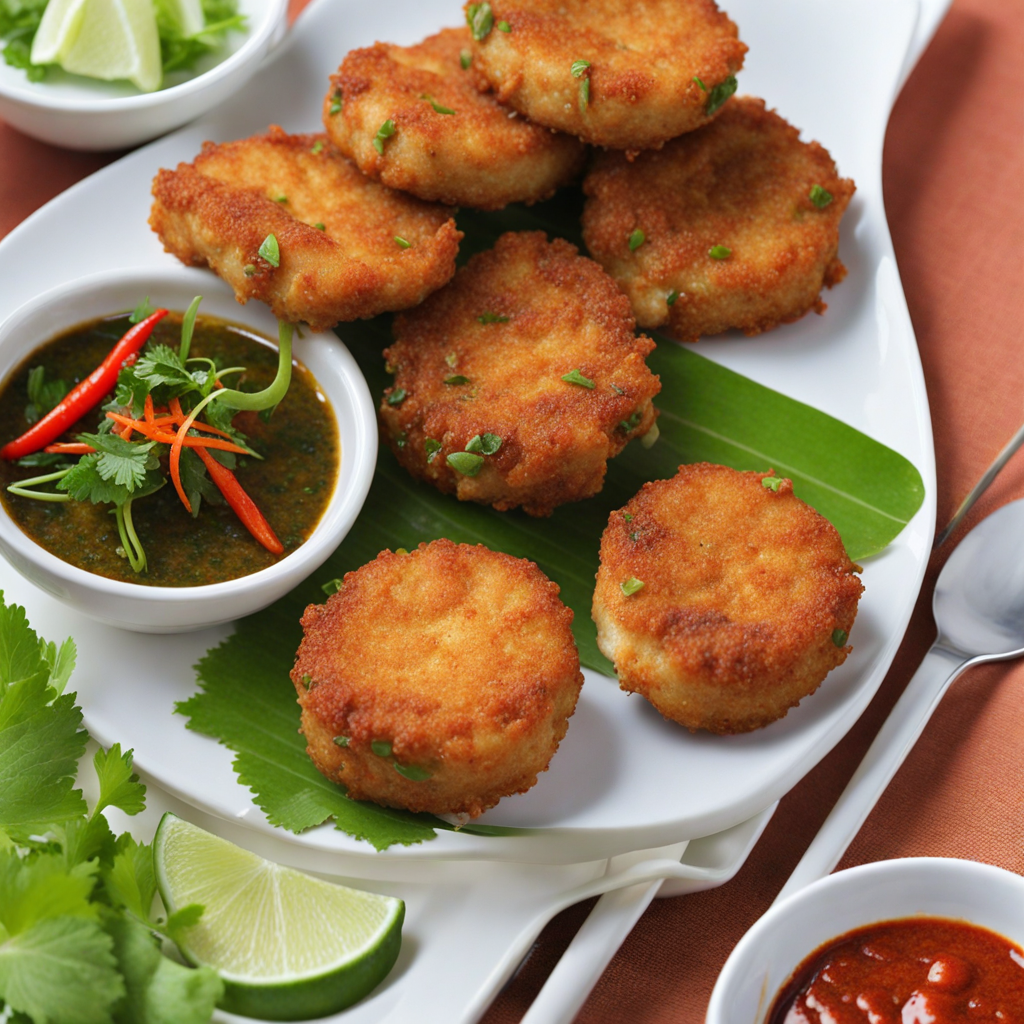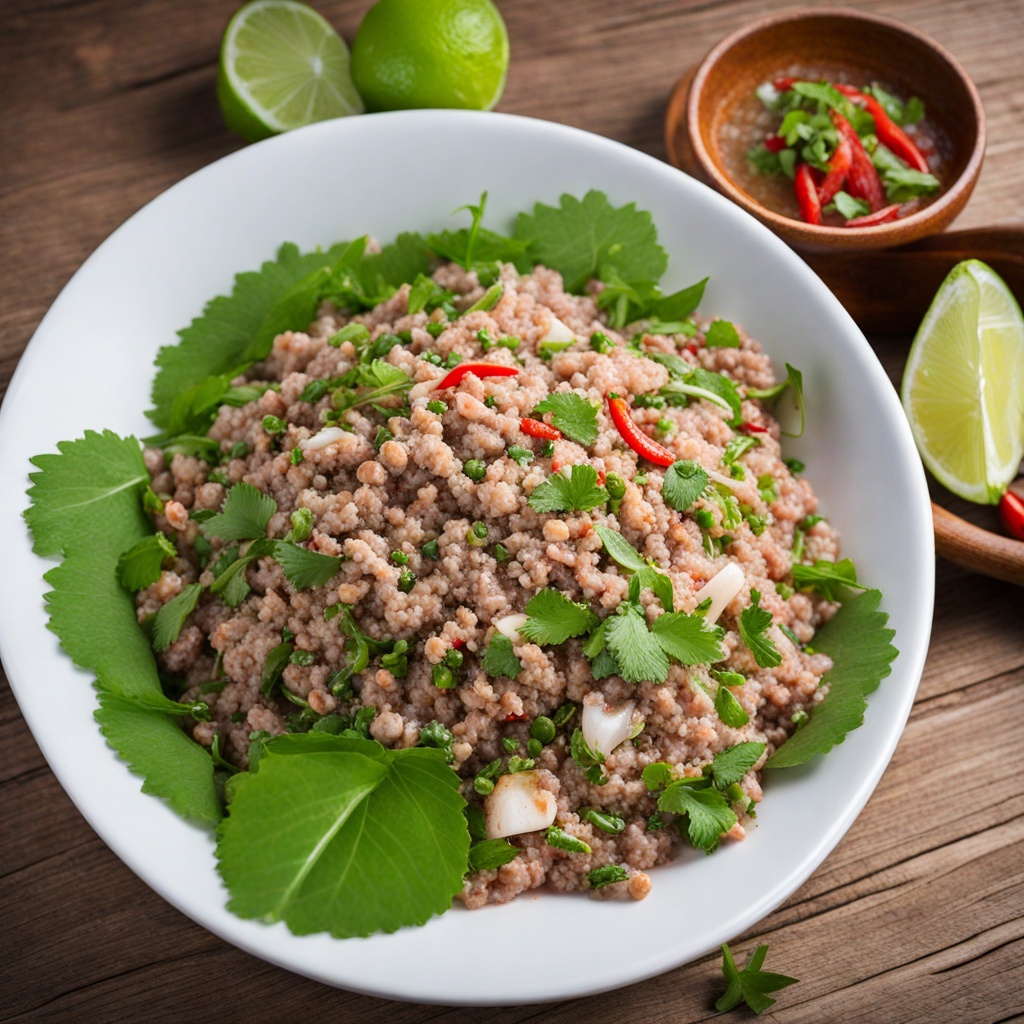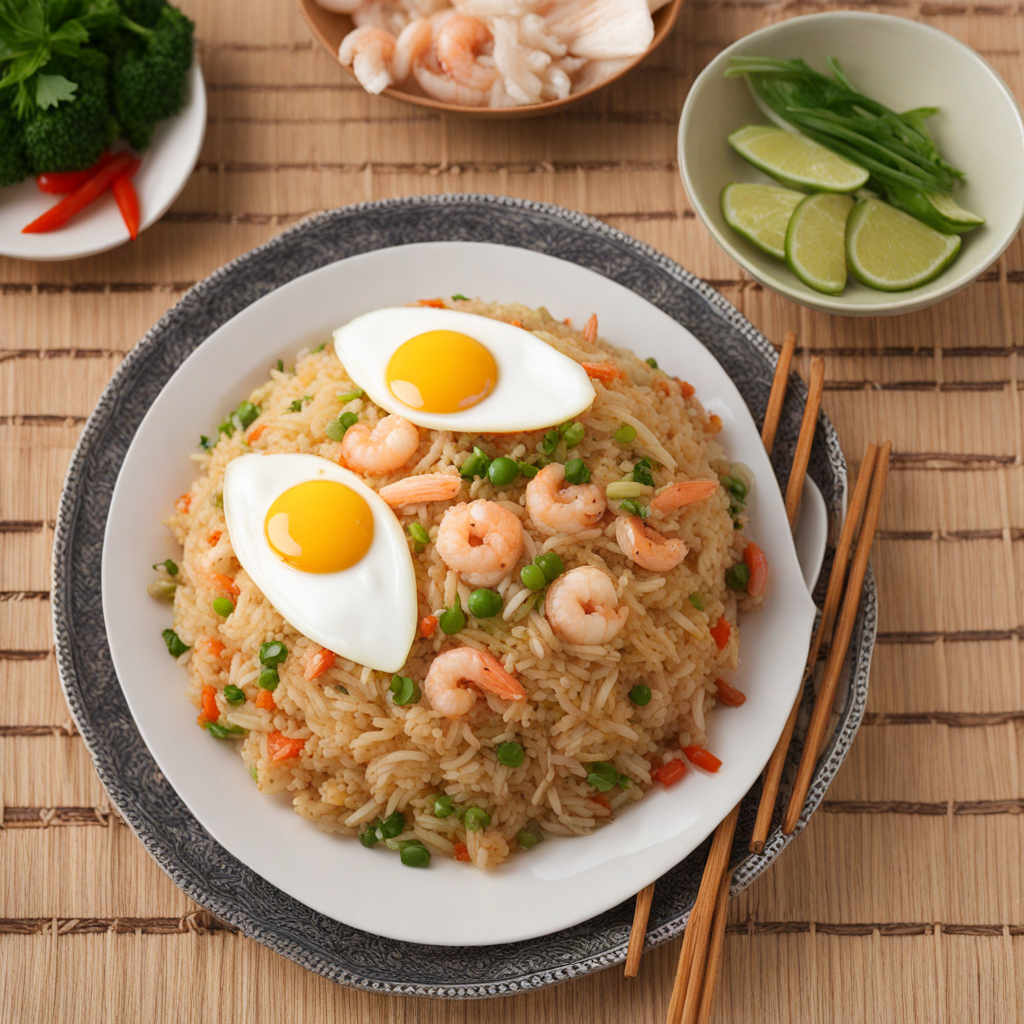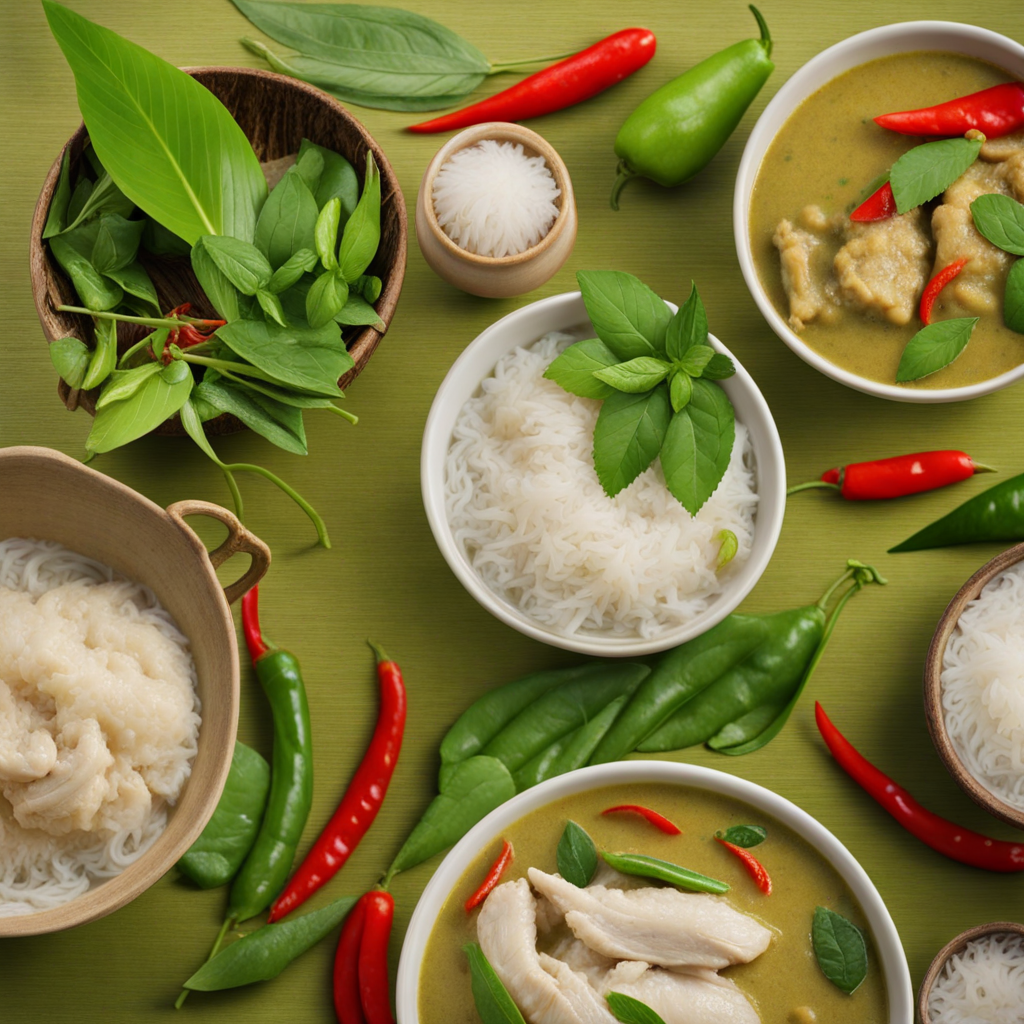Khao Soi
Khao Soi is a delightful Northern Thai dish that beautifully combines the flavors of rich curry and fresh ingredients. At its core, Khao Soi features egg noodles, which are typically boiled and then topped with crispy fried noodles for an enticing textural contrast. The broth is a creamy coconut curry, often infused with a blend of spices such as turmeric, coriander, and curry powder, creating a warm and aromatic base that envelops the noodles in a luxurious embrace. This dish is usually served with a choice of protein, most commonly chicken or beef, which is marinated and cooked until tender, enhancing the overall flavor profile of the meal. What sets Khao Soi apart is the impressive array of accompaniments that elevate the dining experience. Diners are often presented with lime wedges, pickled mustard greens, and sliced shallots, allowing for a customizable flavor journey. The zesty lime adds a refreshing brightness, while the pickled greens contribute a tangy crunch, balancing the richness of the curry. Optional chili oil or powder can be added for those who prefer a spicy kick, making each bowl a unique expression of personal taste. As you savor Khao Soi, you’ll discover a harmonious blend of textures and flavors that reflect the vibrant culinary heritage of Thailand. The creamy, aromatic broth, combined with the chewy and crispy noodles, creates a satisfying mouthfeel that is both comforting and invigorating. With its enticing aroma and beautiful presentation, Khao Soi is not just a meal; it's an experience that transports you to the bustling streets of Chiang Mai, inviting you to indulge in the rich traditions of Thai cuisine.
How It Became This Dish
The History of ข้าวซอย (Khao Soi): A Culinary Journey Through Thailand Origins and Inception Khao Soi, a delicious and aromatic noodle soup, has become a beloved dish in Thailand, particularly in the northern regions, but its origins are a tapestry woven from diverse cultural influences that span centuries. The name "Khao Soi" translates to "cut rice," referring to the egg noodles that are traditionally used in the dish. The roots of this dish can be traced back to the Chinese Muslim communities, particularly the Hui people, who migrated to Southeast Asia, including Thailand, along the trade routes in the 19th century. The dish is thought to have evolved from a Chinese noodle dish called "curry noodle soup," which was adapted to local ingredients and preferences. The northern provinces of Thailand, particularly Chiang Mai, where Khao Soi has found its most fervent following, were crossroads for trade and cultural exchange. The introduction of coconut milk, turmeric, and local curry pastes led to a unique fusion that defines Khao Soi today. Cultural Significance Khao Soi is more than just a dish; it reflects the intricate cultural mosaic of northern Thailand. In the northern Thai culture, communal eating is cherished, and Khao Soi often graces family gatherings, celebrations, and festivals. It embodies the concept of "sanuk," or enjoyment, which is central to Thai life. The act of sharing a bowl of Khao Soi with friends and family fosters a sense of togetherness and connection, underscoring its importance in the social fabric of northern Thai communities. Moreover, Khao Soi is often associated with the Lanna culture, which flourished in northern Thailand. The Lanna people have a rich culinary heritage, and Khao Soi plays a pivotal role in their identity. It is often served during special occasions and ceremonies, symbolizing hospitality and warmth. Ingredients and Preparation At its core, Khao Soi comprises egg noodles served in a curry broth made from coconut milk, flavored with various spices and ingredients. The dish typically features a mix of chicken, beef, or pork, though vegetarian versions have gained popularity. The preparation of Khao Soi involves several steps, where the broth is simmered to perfection, allowing the spices to meld into a rich, aromatic base. A distinctive element of Khao Soi is the use of both soft and crispy noodles. The soft noodles are boiled and then topped with the rich curry broth, while crispy fried noodles add texture and visual appeal to the dish. This duality not only enhances the eating experience but also signifies the balance that is fundamental to Thai cuisine. Traditionally, Khao Soi is garnished with pickled mustard greens, shallots, lime, and chili oil, allowing diners to customize the flavor profile to their liking. Each component contributes to the overall harmony of flavors, textures, and aromas that make Khao Soi a culinary delight. Evolution Over Time As Khao Soi spread beyond its northern Thai roots, it underwent various adaptations, reflecting the local tastes and ingredients of different regions. In Bangkok and other urban areas, Khao Soi has been embraced by food enthusiasts and chefs, leading to innovative interpretations of the classic dish. Some variations incorporate different meats, while others experiment with the broth's flavors, infusing it with local herbs and spices. The rise of food tourism in Thailand has also contributed to Khao Soi's popularity on the global stage. Travelers seeking authentic culinary experiences are drawn to the dish, often visiting local markets and street vendors to savor its rich flavors. This international exposure has led to a resurgence of interest in traditional Thai cuisine, with Khao Soi often being featured in cookbooks and food blogs. In recent years, Khao Soi has also made its way into modern Thai restaurants worldwide, where chefs strive to maintain its authenticity while presenting it in contemporary ways. The dish has become a symbol of northern Thai cuisine, representing a harmonious blend of tradition and innovation. Contemporary Significance Today, Khao Soi stands as a testament to the resilience of cultural heritage in a rapidly changing world. It not only represents the northern Thai culinary tradition but also serves as a bridge between generations. Families pass down their recipes, ensuring that the flavors of Khao Soi are preserved for future generations. This culinary transmission is vital, as it fosters a sense of identity and belonging in a world increasingly dominated by globalization. Moreover, Khao Soi's popularity has played a role in promoting northern Thai culture on the international stage. Culinary festivals and events celebrating Thai food often highlight Khao Soi, showcasing its complexity and depth. As chefs and food enthusiasts continue to explore and experiment with the dish, they also honor its origins, ensuring that Khao Soi remains a vibrant part of Thailand's culinary narrative. Conclusion In conclusion, Khao Soi is more than just a delightful noodle soup; it is a rich tapestry that weaves together history, culture, and community. From its humble origins in the kitchens of Chinese Muslim communities to its current status as a global culinary phenomenon, Khao Soi embodies the spirit of Thai cuisine: a celebration of flavors that brings people together. As we delve into a bowl of Khao Soi, we not only savor the layers of taste but also participate in a shared cultural experience that transcends time and place. Whether enjoyed at a bustling street stall in Chiang Mai or savored in a fine-dining restaurant abroad, Khao Soi continues to capture hearts and palates, ensuring its place in the ever-evolving narrative of Thai food history.
You may like
Discover local flavors from Thailand


